Dahlias are among the most captivating flowers you can grow in a home garden. Known for their wide variety of shapes, sizes, and dazzling colors, they are often the centerpiece of summer and fall landscapes. While they can be grown from seeds, growing them from tubers is the most common method, ensuring vibrant, healthy plants with abundant blooms.
Whether you’re an experienced gardener or a beginner, dahlias can be grown successfully with the right preparation and care. This article explores everything you need to know about growing dahlia tubers—from soil preparation and planting to caring, overwintering, and enjoying their spectacular flowers.
Why Grow Dahlias?
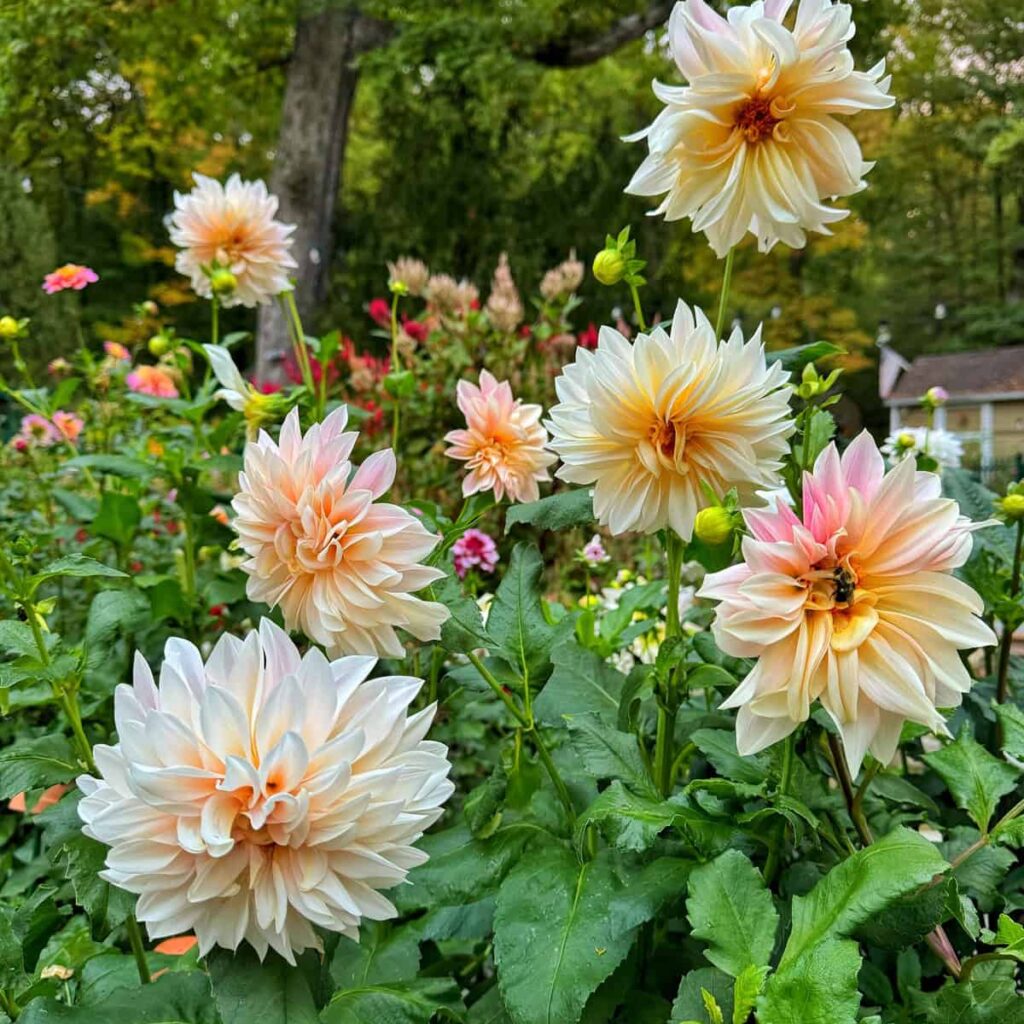
Dahlias are beloved for their:
- Spectacular blooms – From small pompons to dinner-plate-sized flowers.
- Long blooming season – They bloom from mid-summer until frost.
- Wide variety – More than 40 recognized forms and thousands of cultivars.
- Versatility – Suitable for garden beds, borders, containers, and cut flowers.
Besides their beauty, dahlias also attract pollinators like bees and butterflies, making them beneficial for a thriving garden ecosystem.
Understanding Dahlia Tubers
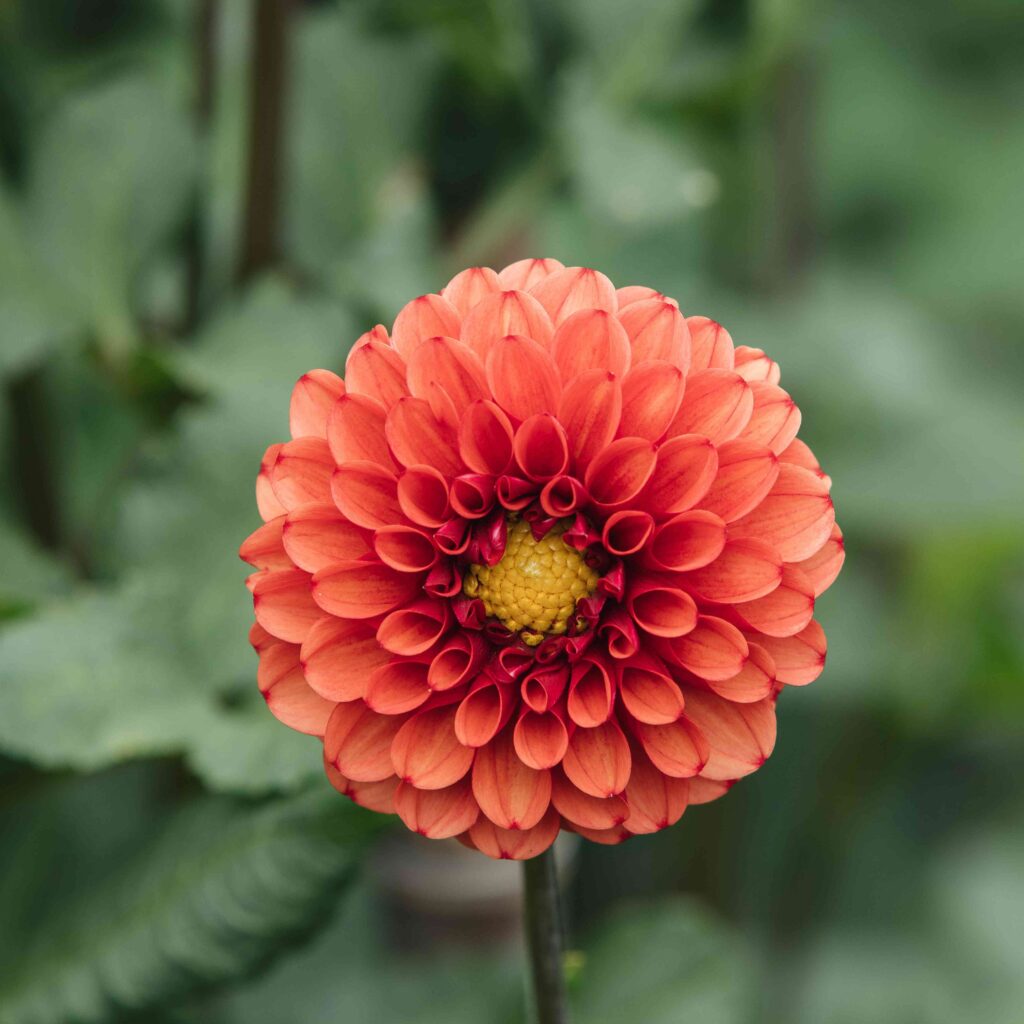
Dahlias are grown from tuberous roots, similar in appearance to sweet potatoes. Each tuber stores energy that helps the plant sprout and grow vigorously in the next season.
- A healthy tuber should be firm, plump, and have at least one “eye” (growth point).
- Tubers multiply underground during the growing season, so you can dig them up and replant or share them the following year.
Ideal Growing Conditions for Dahlias
To get the best results from your dahlia tubers, it’s important to understand their growing needs.
- Climate
- Dahlias thrive in moderate to warm climates.
- They are not frost-tolerant and are typically grown as perennials in zones 8–11 but treated as annuals in colder regions.
- Sunlight
- Require 6–8 hours of direct sunlight daily.
- Morning sun with some afternoon shade is ideal in very hot regions.
- Soil
- Prefer well-drained, fertile soil with a slightly acidic pH (6.2–6.8).
- Heavy clay soils should be amended with compost or sand for better drainage.
- Spacing
- Space plants 12–36 inches apart, depending on variety size.
Preparing the Soil for Dahlia Tubers
- Clear the Area – Remove weeds and debris.
- Loosen Soil – Till or dig soil to at least 12–15 inches deep.
- Add Organic Matter – Mix compost or well-rotted manure to enrich soil.
- Fertilization – Use a low-nitrogen fertilizer (like 5-10-10). High nitrogen encourages leafy growth at the expense of flowers.
- Drainage Check – Avoid waterlogged soil, which causes tuber rot.
Planting Dahlia Tubers
When to Plant
- Plant tubers after the last frost date in your area.
- Soil temperature should be around 60°F (15°C).
How to Plant
- Dig a hole 6–8 inches deep and wide enough to accommodate the tuber.
- Place the tuber horizontally with the “eye” facing upward.
- Cover with 2–3 inches of soil initially. As the plant grows, gradually fill in the hole.
- Do not water heavily until shoots appear to avoid rot.
Staking for Support
- Tall varieties need support. Place a stake or cage at planting time to prevent damaging tubers later.
Caring for Dahlia Plants
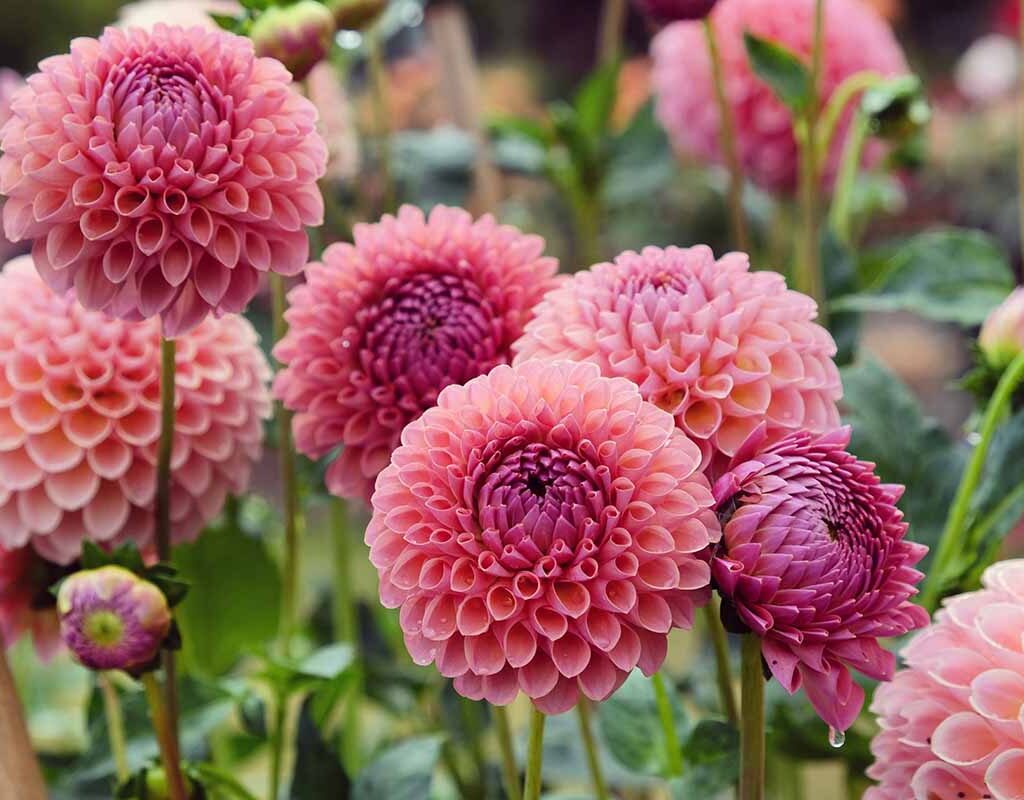
1. Watering
- Water deeply 2–3 times per week once shoots appear.
- Avoid overhead watering to reduce fungal diseases.
2. Fertilizing
- Apply a balanced, low-nitrogen fertilizer every 3–4 weeks.
- Stop fertilizing in late summer to encourage tuber maturation.
3. Mulching
- Apply organic mulch to retain soil moisture and suppress weeds.
- Avoid placing mulch directly on tubers.
4. Pinching and Pruning
- Pinch out the growing tip when the plant is 12–16 inches tall to encourage bushier growth and more flowers.
- Remove spent blooms (deadheading) to promote continuous flowering.
Common Pests and Diseases
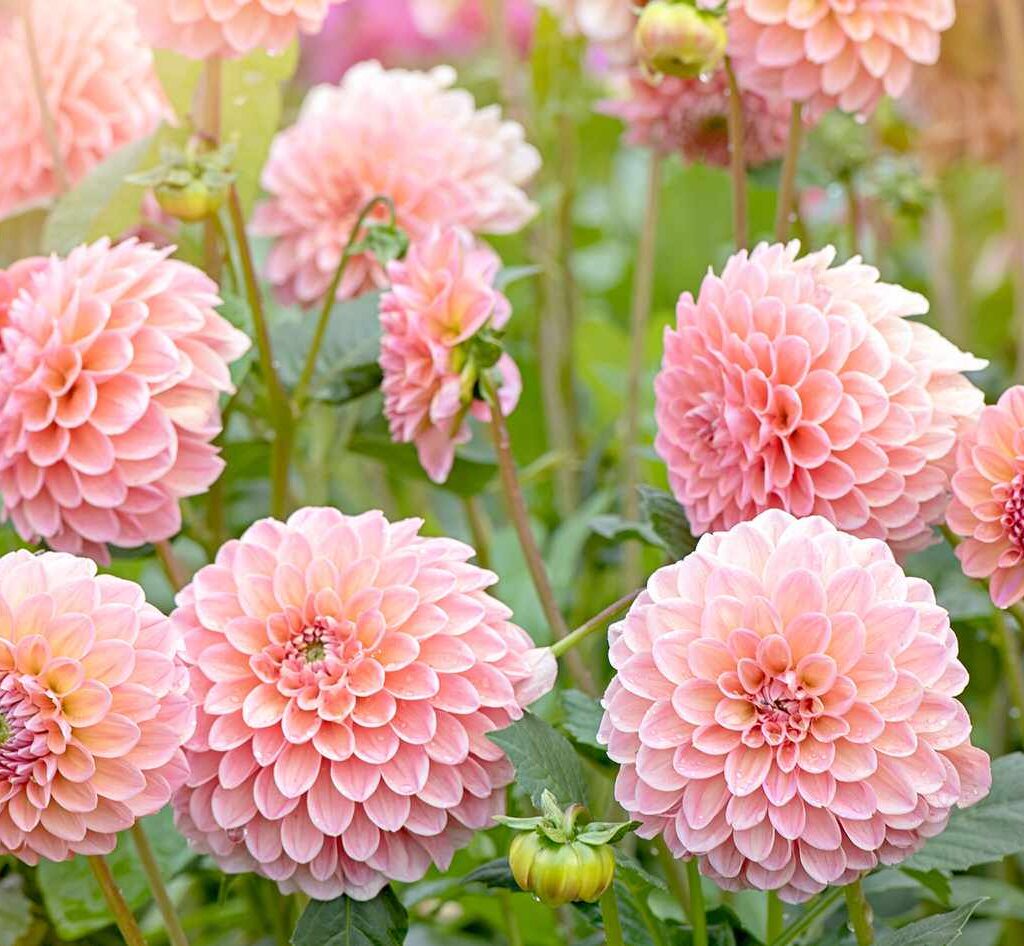
- Pests
- Aphids – Control with neem oil or insecticidal soap.
- Slugs and Snails – Use traps or barriers.
- Spider Mites – Wash with water spray or apply miticides.
- Diseases
- Powdery Mildew – Improve air circulation and use fungicides if needed.
- Botrytis Blight – Avoid wet foliage and remove infected plant parts.
- Tuber Rot – Prevent by planting in well-drained soil and avoiding overwatering.
Harvesting and Enjoying Dahlias
Blooming Time
- Dahlias typically bloom 8–10 weeks after planting.
- Bloom season continues until the first frost.
Cutting for Bouquets
- Cut flowers in the early morning when blooms are fresh.
- Use sharp scissors or pruning shears.
- Place immediately in water to extend vase life.
Overwintering Dahlia Tubers
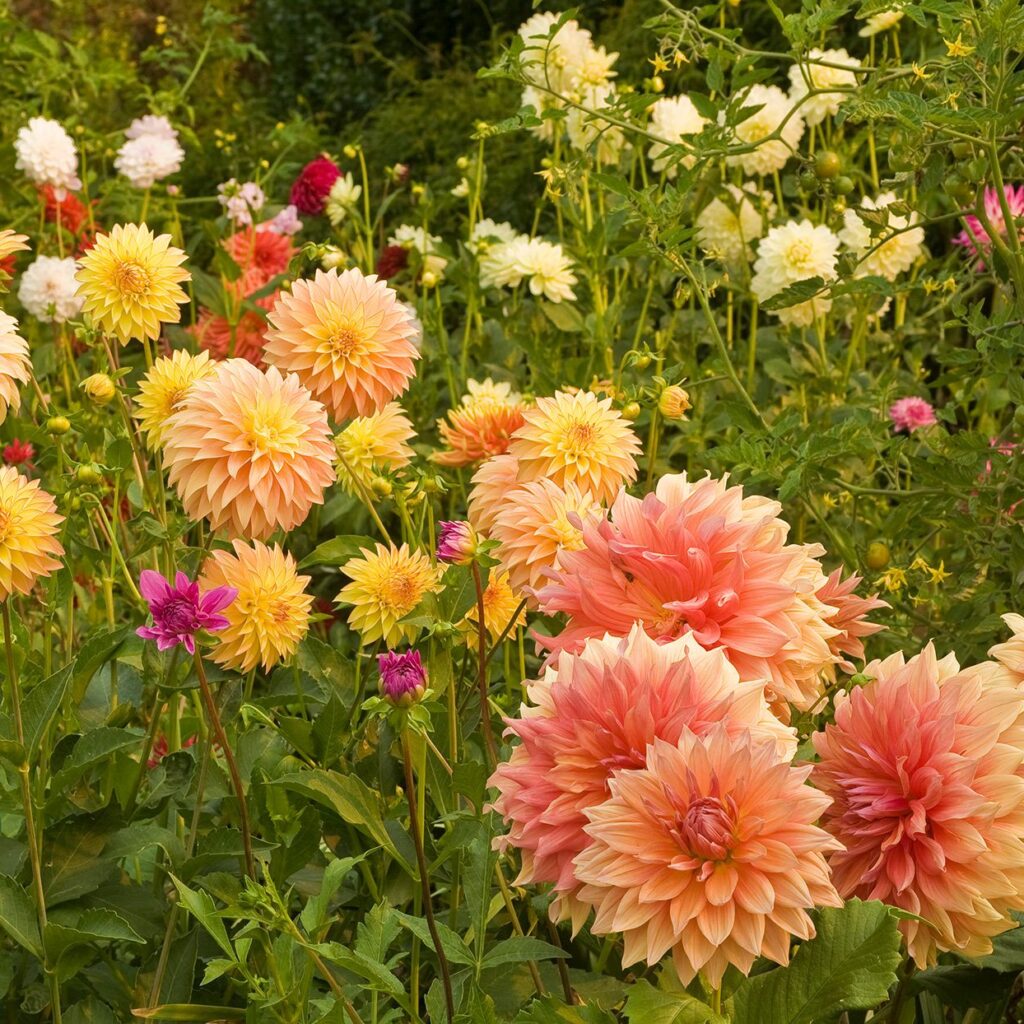
Since dahlias are not frost-hardy in most regions, special care is needed to save tubers for next year.
In Cold Climates (Zones 3–7)
- After the first frost blackens the foliage, cut stems down to 4–6 inches.
- Carefully dig up tubers, avoiding damage.
- Gently brush off excess soil and allow tubers to dry for 1–2 days in a cool, dry place.
- Store tubers in peat moss, vermiculite, or sawdust in a well-ventilated, frost-free location (35–50°F).
- Check periodically for rot or shriveling.
In Warm Climates (Zones 8–11)
- Tubers can be left in the ground over winter if soil is well-drained.
- Apply mulch for protection.
Propagating Dahlias
In addition to planting tubers, dahlias can be propagated by:
- Dividing Tubers – Each division must have at least one “eye.”
- Cuttings – Taken from tuber sprouts in spring.
This allows gardeners to expand their collection or share with others.
Types of Dahlia Varieties to Grow
- Pompon Dahlias – Small, round, ball-like flowers.
- Cactus Dahlias – Spiky petals resembling fireworks.
- Decorative Dahlias – Large, showy blooms with broad petals.
- Dinner-Plate Dahlias – Extra-large flowers up to 12 inches across.
- Collarette Dahlias – Single flowers with a ring of short petals.
Selecting a mix ensures a vibrant and diverse garden display.
Tips for Show-Worthy Blooms
- Provide consistent care—balanced watering, fertilization, and deadheading.
- Stake tall varieties early to prevent stem breakage.
- Space plants properly for airflow and larger blooms.
- Remove side buds if you want fewer but bigger flowers.
- Enter them into local flower shows for recognition!
Conclusion
Growing dahlias from tubers is an incredibly rewarding gardening practice that guarantees showy, vibrant flowers for your garden and home. With the right soil preparation, careful planting, and regular maintenance, you can enjoy dazzling blooms all season long. Whether you grow them for personal enjoyment, for cut flowers, or for garden competitions, dahlias never fail to impress with their elegance and diversity.
By learning how to plant, care for, and overwinter tubers, you ensure that your dahlias will return year after year, bringing color, charm, and life to your outdoor space.
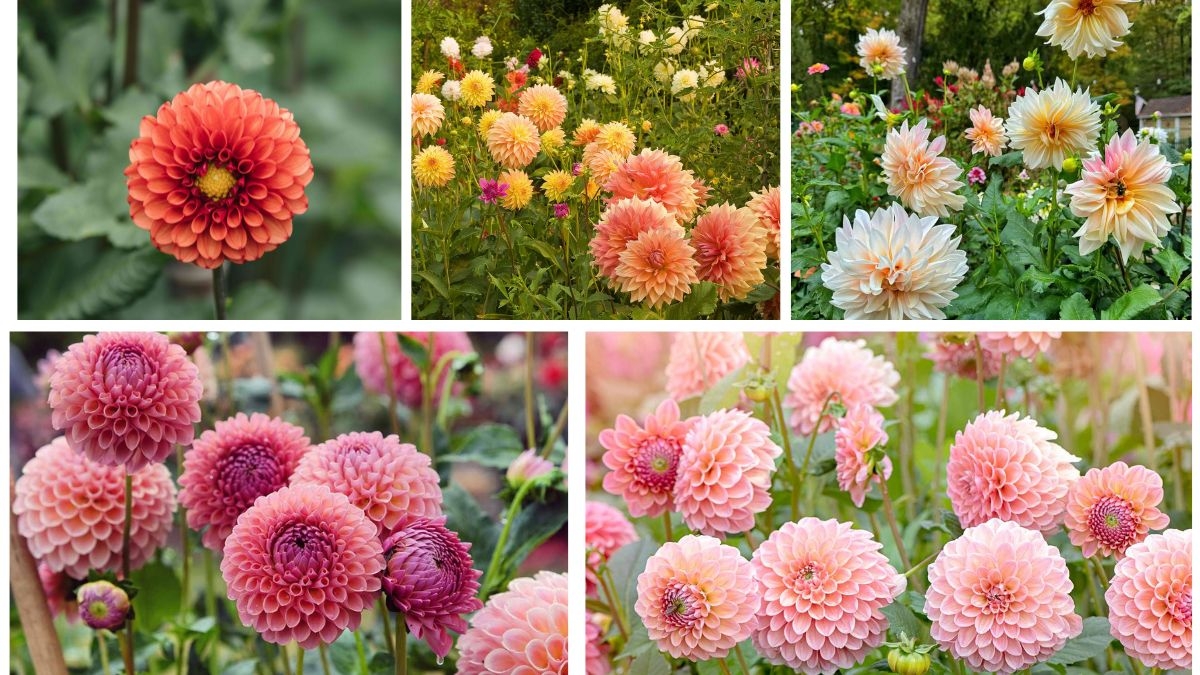




Leave A Comment